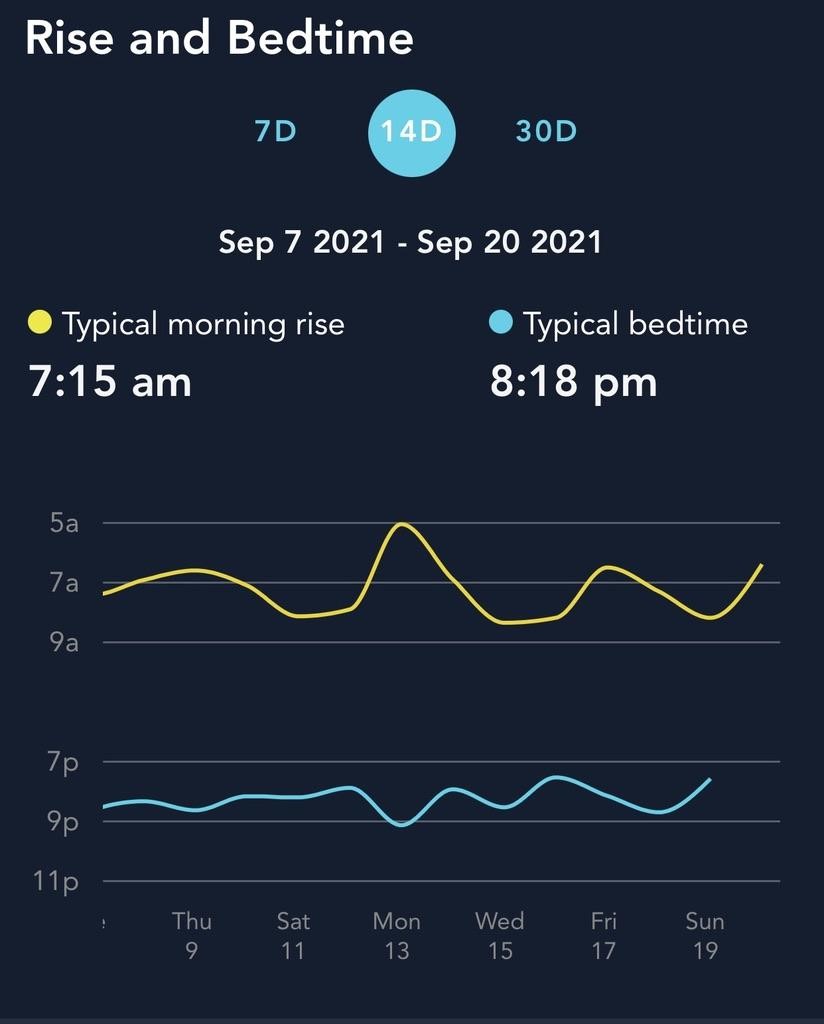When you think of a behaviorist you might think of someone who works with kids with autism.
While this is true, there are many other behavioral health issues that a behaviorist can help with. For example, you might have young children who throw temper tantrums, or an older child who engages in more serious problem behavior that puts themselves and others at risk.
While your pediatrician may give you a referral to a counsellor or psychologist, accessing a behavior analyst to work in collaboration with these other professionals can be a helpful complement to your support team.
A behavior analyst can function in a coaching or consultative role, working directly with you and your child, to teach you the skills you need to support your child. You can find specialized behavior analysts to treat a variety of behavior problems related to various behavioral disorders.
This guide will show you how hiring a credentialed behavior analyst to coach you as a parent or caregiver can help you to better deal with your child’s behavior.
Some of these considerations can also apply when hiring other professionals such as a family therapist or other mental health professional.
Related Read: How To Find A Therapist For Your Child
In this article you will learn:
- What is a behavior analyst?
- Where do behavior analysts work?
- What sets behavior analysis apart from other disciplines?
What is a behavior analyst and are they considered a behaviorist?
Behavior analysts (or board-certified behavior analysts/BCBAs) are behavioral health professionals who adhere to a behaviorist perspective rooted in the science of human behavior and learning called behavior analysis.
Behavior analysts consider the context in which behavior is occurring and deal with observable and measurable behaviors (behavior includes anything a person does).
When analyzing the context of the client, a behavior analyst will use data to inform their decision-making rather than creating hypothetical reasons for why a behavior is happening. They will track and observe behaviors, determine the function of the behavior (i.e., what purpose the behavior serves the person), and then decide on intervention or treatment options based on their analysis of the behavioral data.
So, rather than thinking about the dichotomy of positive or negative behaviors, behavior analysts seek to understand how and why a behavior is working for the person, before starting a treatment or intervention.
Without understanding the function (i.e. the WHY) of a behavior, we won’t be able to create an effective and efficient treatment plan that meets the needs of the client.
In their book, The Joy Of Parenting, child psychologists Amy Murrell and Lisa Coyne differentiate externalizing and internalizing behaviors and the appropriate treatment for both categories.
Externalizing behaviors are those that you easily see your child engaging in such as physical or verbal aggression, self-harm, impulsive behaviors, tantrums, school avoidance, lack of cooperation (i.e. refusal to follow instructions), or challenges with executive functioning skills.
Internalizing behaviors are those that can be harder to pinpoint as these are internal emotional struggles for the child such as depression or anxiety. These can also result in the avoidance of various scenarios that result in the child feeling worried or fearful (2009, p. 27-31).
Generally speaking, behavior analysts are experts in externalizing behaviors. Some will have additional training in therapeutic techniques such as acceptance and commitment training/therapy (ACT) which is shown through research to be an effective intervention strategy for some of the internalizing behaviors.
Others might be dually certified as a registered clinical counsellor or psychologist. This is a conversation to have with someone before hiring them, depending on the needs of your child.
If your child is struggling with internalizing behaviors exclusively, you may need to seek out a registered clinical counsellor or child psychologist. See this article on finding a child therapist for more direction on finding such a professional.
Behavior therapy with a behavior analyst will look different from talk therapy with a psychologist or counsellor. Behavioral therapy is often a great complement to talk therapy because a behavior analyst is there to coach the client or caregivers—often in their environment—and provide tangible actions to create meaningful behavior change.
Where might a behaviorist work?
Behavior analysts will often work with clients in the home, school, or other community settings. They can be found in a variety of settings across human services such as:
- Health care in a general or a children’s hospital (both inpatient & outpatient)
- Education
- Parent training services
- Outpatient health services such as adult services or early intervention for individuals with developmental disabilities
- Human resources
- Adult and adolescent psychiatry
- Environmental protection
- Organizational behavior management
- Law enforcement.
While behavior analysis has historically been associated with supporting individuals with autism spectrum disorder (ASD), behavior analysts are trained to address behavior and skill development that can occur across a variety of diagnoses such as attention-deficit hyperactivity disorder (ADHD), or for individuals without a diagnosis but struggling with some behavioral issues/concerns.
Some behavior analysts will acquire further training and experience to apply the science in a way that is specific to the needs of individuals with diagnoses such as conduct disorder, oppositional defiant disorder (ODD), or related skill deficits, such as a lack of specific executive functioning skills, that might be an underlying factor for externalizing behavior.
Behavior analysts often support families in the home, via telehealth (with an increase in this provision since the outset of the Coronavirus pandemic), or using a blended model of home, clinic, or school and online meetings.
Depending on where you live, and the funding model of that region, one service delivery setting might be more common than another. Some publicly-funded institutions, such as school districts, might hire behavior analysts to serve their student population. The same might be true of private institutions, such as an inclusive preschool.
In other situations, there might be public funding from the government for behavior analysts from an agency to provide limited services to families through a referral from a social worker. They work where there is an interest in providing behavior analytic services, however often funding is a limiting factor. Also, not all behavior analysts are trained to treat every sort of behavior challenge so this is where specialization and checking for training in sub-specialties is important.
Related Read: How To Support A Child With An ODD Diagnosis
Are you looking for a behavioral health professional to work with?
Check out the BHC FindXpert network!
What sets a behaviorist perspective apart from other disciplines?
“A central point of behaviorism is this: we can remake our environment to accomplish some of that much more easily than we can remake our inner selves” (Cooper et al., 2007, p.15).
Behavior analysis is unique from other disciplines because it looks at how our behavior is shaped by the environment around us. Human behavior can be understood by looking at the contingencies in place as we interact with our environment. This provides a unique perspective from other fields and can compliment, rather than be at odds with other perspectives.
Behavior analysis has values that differentiate it from other disciplines and can therefore provide a complementary perspective. These were initially established by Baer, Wolf, and Risley in 1968 in their seminal paper and continue to define applied behavior analysis.
These are:
- Generalizable
- Conceptually systematic
- Effective
- Technological
- Applied
- Analytic
- Behavioral
We’ll now go into these in a bit more detail.
A behaviorist values generality
Behavior analytic services have a capacity-building component to them in which a behavior analyst is coaching the parent, caregiver, or teacher. The goal of this model allows them to gain the skills needed to sustainably support their clients in the long run—beyond the extent of services.
If an individual gains a skill in one setting, it is important they are able to perform that skill in the other settings when needed. Furthermore, the new behaviors and skills should be maintained over time and lead to new skills and behaviors not directly taught.
Related Read: How To Hire A Board Certified Behavior Analyst (BCBA)
Support plans are conceptually systematic
Behavior analysts create behavior change or skill development plans based on evidence-based practices that have been shown to be effective. They are based on concepts from behavior science and are used to inform each intervention plan.
Strategies used by a behavior analyst should always have scientific underpinnings grounded in research. Behavior analysts should be able to provide a clear link between the intervention strategies chosen and the behavior analytic principles on which they are based.
This doesn’t mean that new curriculums, programs, and comprehensive treatment plans cannot be tried. Behavior analysts consider the behavioral principles underlying the program, decide if there is enough evidence to suggest it could be an effective intervention for their client, and take data should they choose to implement it.
By doing this, the data will quickly show whether something is working or not and allow the practitioner to quickly change the strategies or intervention plan if it isn’t.
Related Read: Evidence-Based Parenting Explained & 14 Resources To Get Started
A behaviorist must be effective
Simply put, there must be measurable changes in the behavior or skill of concern. If not, behavior analysis hasn’t truly been applied.
A behaviorist makes decisions based on data. If progression during a treatment or intervention plan is not trending in the right direction, they are ethically obligated to re-evaluate and change the treatment plan accordingly and find a new strategy that will move the client toward the goals of the program.
Behavior analysts are technological
Clients are provided with some sort of written intervention plan with detailed, clear, and specific directions as to how a behavior change or skill development program will be implemented.
Behavior analysts will organize and write plans in a manner that allows others to easily understand and follow the specific directions contained in the plan. A behaviorist seeks to avoid jargon and use clear language that enables the recipient of services to understand the plan.
Not only is it important for the implementer (i.e., parent, caregiver, educator) to understand the plan but, in a future scenario where services are shifted to another behavior analyst, they can easily continue the plan or understand what had already been implemented.
Related Read: ABA Practice Management Software For Enterprise Practices
Their work is in the applied realm
Most behavior analysts study changes in behavior at the individual or small group level (e.g., classroom) and seek to work on goals that are meaningful to the client and are of importance to the community in which the client is situated.
The American Academy of Pediatrics (AAP) highlights how behavior analytic principles are a significant component of effective class-wide intervention models, such as TEACCH and LEAP, that are designed for inclusive classrooms.
These models have shown to be effective in creating positive change for all students in these inclusive settings. In this case, a behavior analyst might work with a preschool classroom teacher to implement such a program that creates positive change for all students, regardless of whether they have a diagnosis or not.
In North America, for the most part, we value inclusion in education systems, and having a program that meets the needs of all students in such an environment would be considered ‘applied.’ Behavior analysis is being applied to create positive change and skill development for everyday students and educators.
Behaviorists are analytical
Services from a behavior analyst always include an analysis of the behavior or skill of concern.
The skillset, behavior patterns, and context/environment of the client is assessed and analyzed to understand why a behavior is occurring and how the environment can be amended to help the client succeed in attaining their goals in the future. A functional relationship must be demonstrated between the changes to the environment and the behavior of concern (Cooper et al., 2007, p.17).
Data is collected and this functional relationship between a behavior and the changes to the client’s context is visually represented in a graph. Various metrics can be analyzed, depending on the skill or behavior in question.
A behavior analyst might track and graph the rate or frequency, duration, delay before a behavior is initiated, or the magnitude of a behavior. They’ll use the graphed data to make data-informed decisions about changes to the intervention plan. These are also shared with the client to inform decision-making.
For example, behavior analysts that work in health and fitness will analyze their client’s current activity patterns, and life and home context, to understand what changes can be made to make a new fitness routine more likely to be maintained in the future.
Perhaps your goal is to increase your step count over the next month and you really enjoy seeing your stats on a fitness app. That feedback is reinforcing for you. Your fitness coach may use your baseline step data to set reasonable targets for you and measure your progress over time.
They analyze what aspects of the client’s life are currently making it challenging to maintain a fitness routine, and this analysis informs future behavior planning. For example, tracking bedtime or wake time depending on when you need to fit in your exercise time might be a measurement of success if your goal is to be in bed by a certain time every day.

Taking a ‘behavioral’ perspective
Behavior analysts target behaviors that are measurable and observable, while also considering a client’s history and context such as past trauma, cultural values, medical status, education, additional diagnoses, etc.
The client’s context is incredibly important when evaluating and assessing the client’s needs. Although behavior analysts will focus on behavior change or skill development that is observable and measurable, internal behavior such as thoughts and feelings are also considered.
However, since behavior analytic services are behavioral, a behavior analyst will ensure that the behavior being studied is the behavior that is to be changed (or skill to be developed). A behaviorist does not look at behaviors that are unrelated or serve as a proxy for the behavior of concern (p.16).
Above are just a few of the underpinnings of the behavior analytic approach so you can better understand the perspective of a behavior analyst you have working with your family.
I encourage you to ask questions about the philosophical perspective of the work being done by the professionals you hire, as well as the research behind their methods. As a consumer of services, these are things you deserve to know.
To summarize what a behaviorist is…
A behavior analyst works from a behaviorist perspective, looking to understand behavior from the context of the learner. They deliver services based on the principles of behavior analysis as outlined above.
Many behavior analysts will specialize in more specific areas, such as academic instruction through precision teaching, remedial reading instruction, social skills instruction, teaching life skills, teaching executive functioning skills, or even behavioral therapy for sleep and toileting.
There is a wide range of behavioral issues that behavior analysts can help you with. If you think you could benefit from the help of a behavioral professional, read our article on how to find a child therapist.
Or, head on over to our podcast library and learn from experts! Here’s one you might find insightful: Values-Based Parenting (with Courtney Bilton, BCBA)
Are you looking for a behavioral health professional to work with?
Check out the BHC FindXpert network!

